Making decorative statues from waste paper
Aug 21, 2019
As a child, Odwori used to mould miniature objects from clay soil.

SKILLS
When Gerald Odwori is seen at construction sites or rubbish pits collecting dumped cement paper bags, some people right away think he is a lunatic. Yet, for the 29-year-old, these are gold mines.
He recycles the papers to tranform them into beautiful art pieces.
Odwori started doing this as a student at university. Today, his art workshop is located at his home at Bunamwaya-Ngobe in Wakiso district. It is here that he designs miniature decorative statues from the collected paper bags.
The Kenyan-born artist has grown up in Uganda for most of his life. After secondary school here, he pursued a certificate and a diploma in industrial art and design at Michelangelo College of Creative Arts in Kisubi, off Entebbe road.
He later pursued a Bachelor's degree in industrial art and design at Kyambogo University.
"During my studies at the university, I used to work, which enhanced my skills and experience with my friend Nicholas Arinaitwe, who is also an artist. We designed different sculptures for churches to raise tuition because my parents were low-income earners," says Odwori.
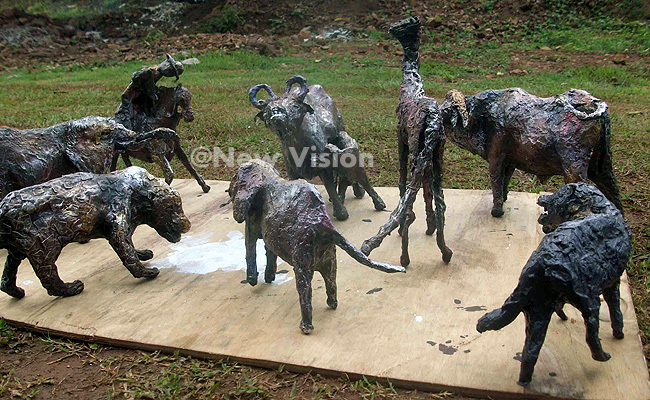 Some of Odwori's work. (Credit: Fred Mubanda)
Some of Odwori's work. (Credit: Fred Mubanda)
The idea
The first-born in a family of three children was inspired by the idea of turning cheap materials into useful products.
As a child, he used to mould miniature objects from clay soil. Years later, his lecturer encouraged him to put to good use discarded materials by turning them into valuable items.
Coming from a modest background, Odwori took on the idea to facilitate his studies. "I started with capital of sh20,000," he recalls.
Odwori specialised in using paper to make attractive miniature sculptures. He considers the raw materials affordable and transport costs low. He feels his detailed paper art can be used to decorate anywhere desired.
He chose this particular form of art because "most artists have not yet discovered the secret of using paper in such a way".
What he needs
• The artist uses discarded cement paper bags which he gathers from the construction sites or rubbish pits.
• 1kg of cassava flour (sh1,200) from the shop or market
• Wire mesh for sh3,000
• Black paint for between sh3,000 and sh10,000
• Metallic paint at sh1, 000 from hardware shops
 Odwori down to work. (Credit: Fred Mubanda)
Odwori down to work. (Credit: Fred Mubanda)
For distinct animal or object shapes, Odwori uses a welded wire mesh to vividly bring out the body structure, before sketching the object on a piece of paper.
He uses four layers of paper which are fastened over the wire mesh of the structure. Each layer of paper is plastered on the frame using cassava flour paste, left to dry for a couple of hours. This is done with the other layers until a complete body structure is achieved.
Odwori then expertly trims the edges to make the object neat. The general outline of the body parts are moulded. In one week, he can make from 20 to 30 pieces, depending on a client's order.
Before painting, the paper sculpture must be cleaned up with a soft brush to remove all loose bits. Odwori says he uses good quality interior paint. The metallic paint application completes the look.
Many people hardly believe that what is before their eyes is a product of paper, says Odwori.
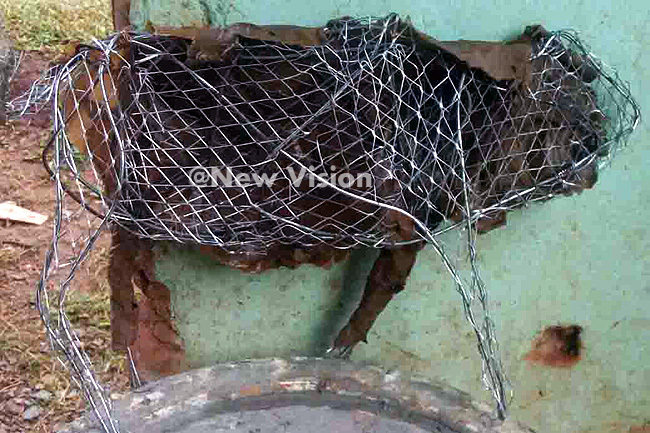 The Kenyan-born artist uses simple items for his work. (Credit: Fred Mubanda)
The Kenyan-born artist uses simple items for his work. (Credit: Fred Mubanda)
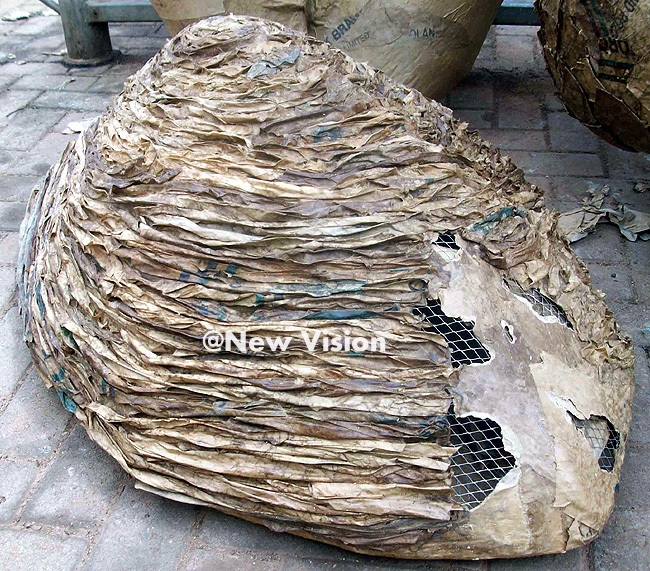 Several layers of paper are used on a single piece. (Credit: Fred Mubanda)
Several layers of paper are used on a single piece. (Credit: Fred Mubanda)
Selling his work
Odwori uses social media platforms, emails, trade shows and exhibitions to sell and promote his work.
His clients in a way advertise his products when they buy them. He has samples at his home workshop. "Some people come wanting decorative statues of animals that represent their clan totems," he says.
The prices range depending on the size. His work ranges from sh100,000 to sh800,000.
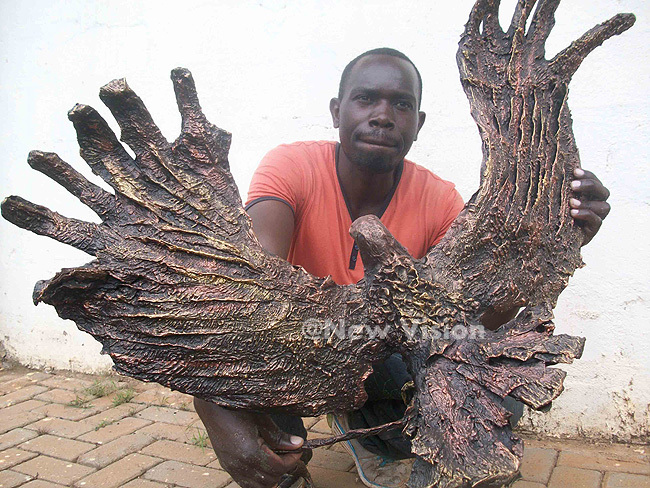 Skills put to good use. (Credit: Fred Mubanda)
Skills put to good use. (Credit: Fred Mubanda)
Gains and challenges
On top of earning him clients and friends and catering for his basic needs, the art work has also enabled Odwori to pay school fees for his siblings.
He also trains different groups of youth in the craft.
The elements, however, can affect his work. During the wet season, the art pieces often take long to dry. If not placed in a warm place, the cassava flour applied on the pieces can decay, attracting damaging bacteria.
On a good day though, orders can fly in.
Odwori's work can be used to ornate offices, homes, hotels, libraries and churches. If placed beyond the reach of children, they can last for years.
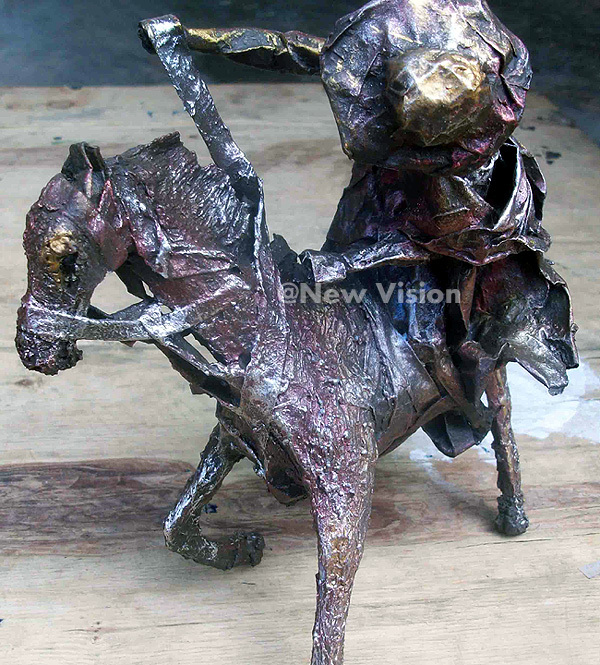 Looks metallic, right? That's all paper. (Credit: Fred Mubanda)
Looks metallic, right? That's all paper. (Credit: Fred Mubanda)
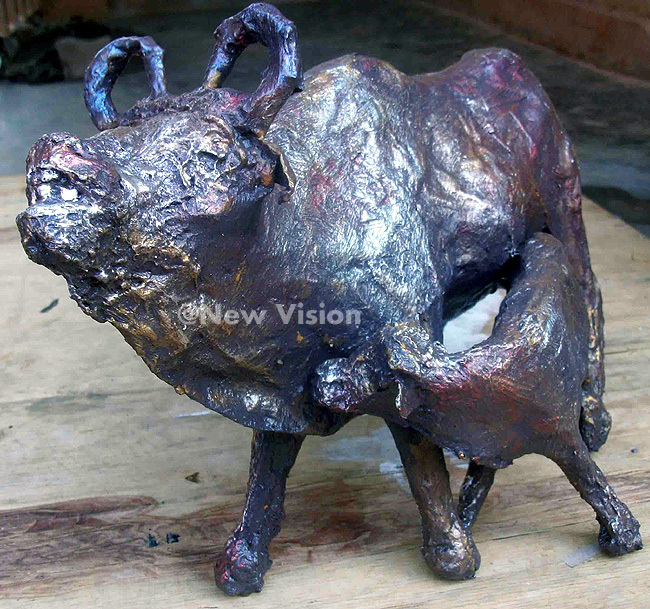
What next?
Odwori hopes that his art project will expand natiowide to provide more employment opportunities to the youth.
He also wishes to export his work to neighbouring countries and beyond.
And his parting shot to the youth: " Love your talent if you want to advance."
